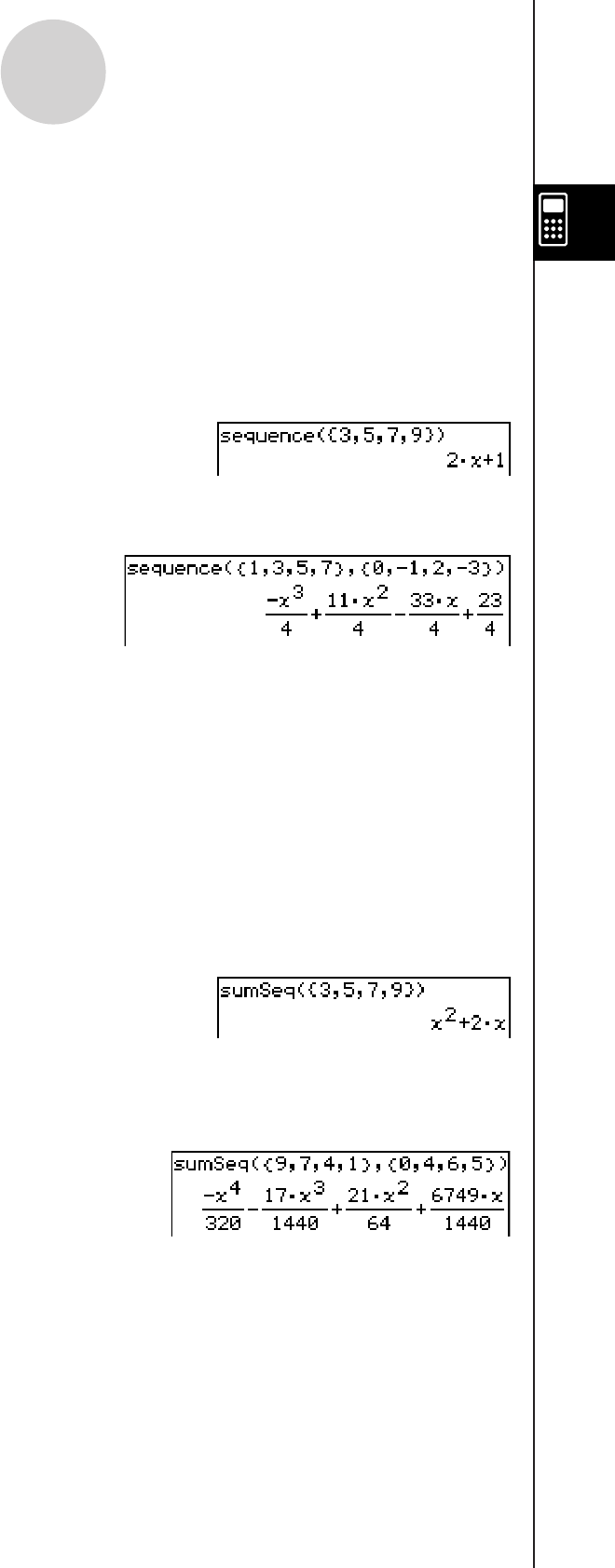
20060301
2-8-30
Using the Action Menu
u
sequence
Function: Returns the lowest-degree polynomial that represents the sequence expressed
by the input list. When there are two lists, this command returns a polynomial
that maps each element in the first list to its corresponding element in the
second list.
Syntax: sequence (List-1[, List-2] [,variable] [
)
]
• “
x
” is the default when you omit “[,variable]”.
Example: To determine a polynomial for a sequence expressed by the list {3, 5, 7, 9}
Menu Item: [Action][List-Calculation][sequence]
Example: To determine a polynomial that maps each element in the list {1, 3, 5, 7} to its
corresponding element in the list {0, –1, 2, –3}.
Menu Item: [Action][List-Calculation][sequence]
u
sumSeq
Function: Finds the lowest-degree polynomial that represents the sequence expressed
by the input list and returns the sum of the polynomial. When there are two
lists, this command returns a polynomial that maps each element in the first
list to its corresponding element in the second list, and returns the sum of the
polynomial.
Syntax: sumSeq (List-1[, List-2] [,variable] [
)
]
• “
x
” is the default when you omit “[,variable]”.
Example: To determine the sum of a polynomial for a sequence expressed by the list
{3, 5, 7, 9}
Menu Item: [Action][List-Calculation][sumSeq]
Example: To obtain the polynomial that maps the elements in the list {9, 7, 4, 1} to
its corresponding elements in the list {0, 4, 6, 5}, and return the sum of the
polynomial.
Menu Item: [Action][List-Calculation][sumSeq]


















